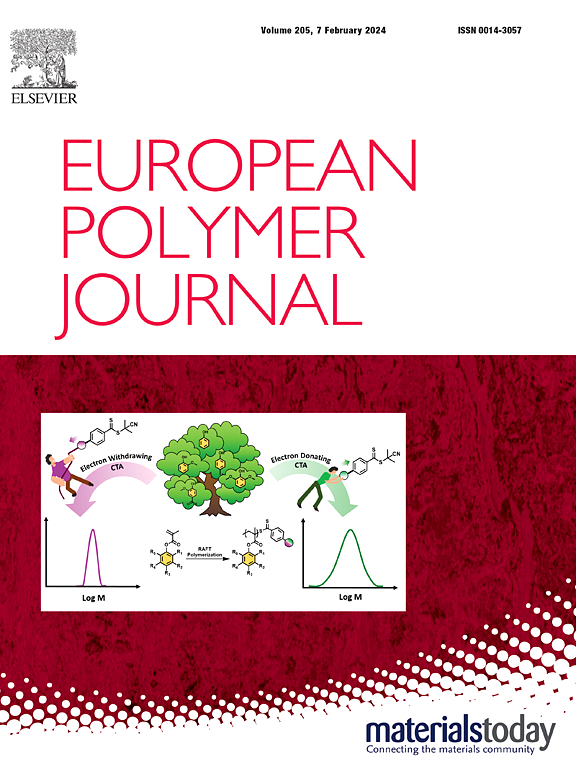Injectable, self-healing and antioxidative gelatin-based nanocomposite hydrogels accelerating full-thickness wound healing
IF 5.8
2区 化学
Q1 POLYMER SCIENCE
引用次数: 0
Abstract
Injectable, multifunctional wound dressings hold great potential for treating severe dermal wounds with irregular shapes or cavities. Here, we developed an injectable nanocomposite hydrogel by incorporating polydopamine functionalized Laponite® (PDA@LAP) into a thermosensitive gelatin supramolecular polymer through a combination of physical and chemical crosslinking. This injectable and self-healing nanocomposite hydrogel, denoted as PLG, exhibits excellent physiological stability, biocompatibility, hemostasis and specific antioxidant activity. In a rat full-thickness wound model, PLG significantly enhanced wound healing by promoting collagen deposition, highlighting its potential as a wound dressing for irregular skin lesions without causing secondary damage. Our findings suggest that these multifunctional properties make PLG an ideal candidate for minimally invasive treatment of full-thickness wounds in clinical applications.

求助全文
约1分钟内获得全文
求助全文
来源期刊

European Polymer Journal
化学-高分子科学
CiteScore
9.90
自引率
10.00%
发文量
691
审稿时长
23 days
期刊介绍:
European Polymer Journal is dedicated to publishing work on fundamental and applied polymer chemistry and macromolecular materials. The journal covers all aspects of polymer synthesis, including polymerization mechanisms and chemical functional transformations, with a focus on novel polymers and the relationships between molecular structure and polymer properties. In addition, we welcome submissions on bio-based or renewable polymers, stimuli-responsive systems and polymer bio-hybrids. European Polymer Journal also publishes research on the biomedical application of polymers, including drug delivery and regenerative medicine. The main scope is covered but not limited to the following core research areas:
Polymer synthesis and functionalization
• Novel synthetic routes for polymerization, functional modification, controlled/living polymerization and precision polymers.
Stimuli-responsive polymers
• Including shape memory and self-healing polymers.
Supramolecular polymers and self-assembly
• Molecular recognition and higher order polymer structures.
Renewable and sustainable polymers
• Bio-based, biodegradable and anti-microbial polymers and polymeric bio-nanocomposites.
Polymers at interfaces and surfaces
• Chemistry and engineering of surfaces with biological relevance, including patterning, antifouling polymers and polymers for membrane applications.
Biomedical applications and nanomedicine
• Polymers for regenerative medicine, drug delivery molecular release and gene therapy
The scope of European Polymer Journal no longer includes Polymer Physics.
 求助内容:
求助内容: 应助结果提醒方式:
应助结果提醒方式:


